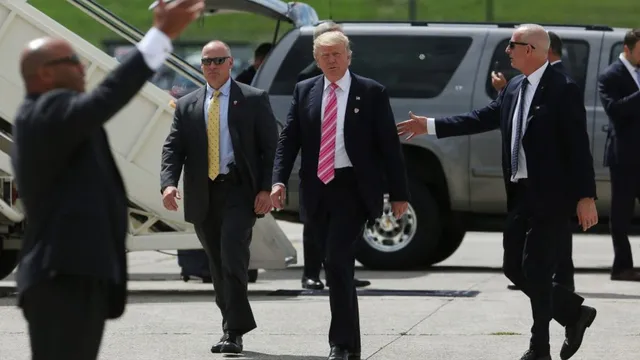- By Ajeet Kumar
- Mon, 20 Jan 2025 11:00 AM (IST)
- Source:JND
Donald Trump is set to take oath as America's 47th President on Monday. This year's inauguration will be different. When thousands of National Guard forces and law enforcement officers locked down Washington during racial protests and the January 6 riot four years ago. However, last year's attack on Trump during an election rally in Pennslyvania will definitely force the security agencies to remain on their toes.
With 30 miles (48 km) of tall black temporary fencing, 25,000 law enforcement officers and security checkpoints set up to process hundreds of thousands of spectators, Washington is braced for Trump's inauguration today.
Unprecedented security at Trump's inauguration
Brigadier General Leland Blanchard II, adjutant general of the Washington, DC, Guards said one change this year is that the troops are coming in a day or two earlier “so that we can ensure that as we’re building up, we’re again keeping those lines of communication clear, and that we’re not overwhelmed with a large number of folks coming in in a very short period of time.”
Having the swearing-in and parade indoors, due to the frigid weather, will likely cause some shifts in where troops may be positioned, but no other major changes because troops will still have to secure the area around the Capitol.
Across the city, a wide array of federal government, law enforcement and military officials have been meeting, planning and doing tabletop exercises for months.
The goal, said Blanchard, is to ensure that all the agencies are able to communicate clearly and consistently throughout the event. He said a lot of the exercises and discussions have focused on ensuring that everyone understands their specific roles and responsibilities and that there will be rapid and clear communications if something unexpected happens.
Guard troops will wear a special patch at Trump’s inauguration
This year National Guard leaders have authorised the use of a special shoulder patch with the Guard motto “Always Ready, Always There,” to ensure that people coming to the inauguration of President-elect Donald Trump on Monday will know who is who. Earlier in 2020, the blur of camouflage and helmets made it nearly impossible to tell the difference between cops and troops.
"It’s tough these days where it feels like every law enforcement agency and everybody out there wants to wear the same camouflage pattern that I’m wearing," Army Col. Larry Doane, a senior Guard leader, was to provide a visible way to distinguish the troops said. "There’s a very, very long tradition in our country about discomfort with the military policing a population, and we want to stay in step with that."
Officials say the US government is far more prepared this year for any emergency or incident, but they also believe that America’s transfer of power will be less violent and threatening than it was in 2021, when about 25,000 Guard troops descended on the city in the wake of the siege at the Capitol. “After the inaugural four years ago, where there were very serious security concerns, the preparation for this event has been very robust and rigorous,” Army Secretary Christine Wormuth said.
Crowd management, traffic control and other security
The Guard troops will do crowd management, traffic control and other security, and there will be teams to monitor and respond to any chemical, biological or other explosive incident. They will help to staff 100 traffic control points and five subway stops. Intelligence agencies are closely watching for any threats. So far, officials say they aren’t seeing any significant risks, and at this point, they expect this inauguration will look more like those of eight, 12 or 16 years ago.
This time, the hotels and eateries will be packed. So Guard officials have identified other ways to house, feed and care for the troops who will pour in to help secure the city. They are expected to use a number of downtown buildings that will be largely vacant as federal employees telework over the coming days. About 87 per cent of the Guard troops will be Army and 13 per cent will be Air Force.
(With inputs from Agency)

